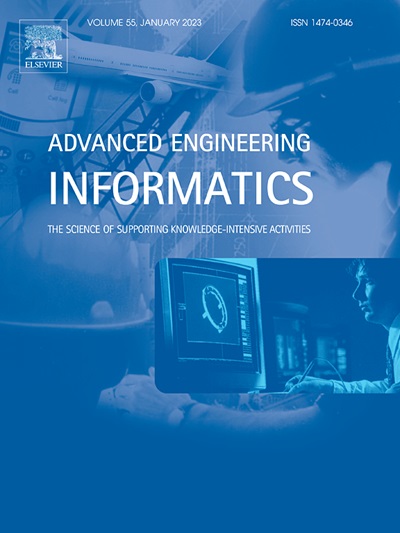Graph neural network-assisted evolutionary algorithm for rapid optimization design of shear-wall structures
IF 8
1区 工程技术
Q1 COMPUTER SCIENCE, ARTIFICIAL INTELLIGENCE
引用次数: 0
Abstract
When solving expensive optimization problems (EOPs), e.g., optimization design of shear-wall structures, conventional evolutionary algorithms (EAs) face a challenge of elevated costs related to fitness evaluation. On the other hand, surrogate-assisted evolutionary algorithms (SAEAs) can effectively reduce evaluation costs and are therefore widely used. However, when encountering new structure cases to be optimized, existing SAEAs require the effort of establishing datasets and training machine-learning surrogate models from scratch, which significantly lowers their efficiency. To address this issue, a novel graph neural network (GNN)-assisted evolutionary algorithm (GAEA) is proposed, which features a distinct framework and workflow from existing SAEAs. Then, a powerful GNN surrogate model is proposed, which is based on graph representations and exhibits good generalization abilities. After being trained on a large number of cases of the same type, the model can be applied to various new cases of that particular type. By integrating GNN with EA, GAEA can directly use the trained GNN surrogate model for fitness evaluation when dealing with new structure cases. Furthermore, a distance-based evaluation and updating strategy of surrogate models is innovatively proposed, which can efficiently correct the prediction error of GNN without retraining the model. The proposed GAEA is applied to the optimization design of reinforced concrete (RC) shear-wall structures, which is a typical EOP in the field of structural engineering. Numerical experiments show that: 1) for the same number of fitness evaluations, GAEA can achieve 64.4 % to 92.5 % of the optimization outcomes of typical EA or SAEA, respectively, with only 2.8 % to 33.2 % of their computational time; 2) for the same optimization duration (10 min, 45 min, and 120 min), GAEA’s optimization outcomes are superior to those of typical EA and SAEA, meeting the rapid optimization demands for shear-wall structures in the schematic design phase. The findings of this study can be applied to the rapid optimization of various RC building structures and provide references for more efficient solutions to other EOPs.
求助全文
约1分钟内获得全文
求助全文
来源期刊

Advanced Engineering Informatics
工程技术-工程:综合
CiteScore
12.40
自引率
18.20%
发文量
292
审稿时长
45 days
期刊介绍:
Advanced Engineering Informatics is an international Journal that solicits research papers with an emphasis on 'knowledge' and 'engineering applications'. The Journal seeks original papers that report progress in applying methods of engineering informatics. These papers should have engineering relevance and help provide a scientific base for more reliable, spontaneous, and creative engineering decision-making. Additionally, papers should demonstrate the science of supporting knowledge-intensive engineering tasks and validate the generality, power, and scalability of new methods through rigorous evaluation, preferably both qualitatively and quantitatively. Abstracting and indexing for Advanced Engineering Informatics include Science Citation Index Expanded, Scopus and INSPEC.
 求助内容:
求助内容: 应助结果提醒方式:
应助结果提醒方式:


